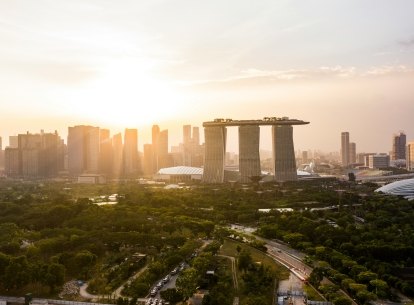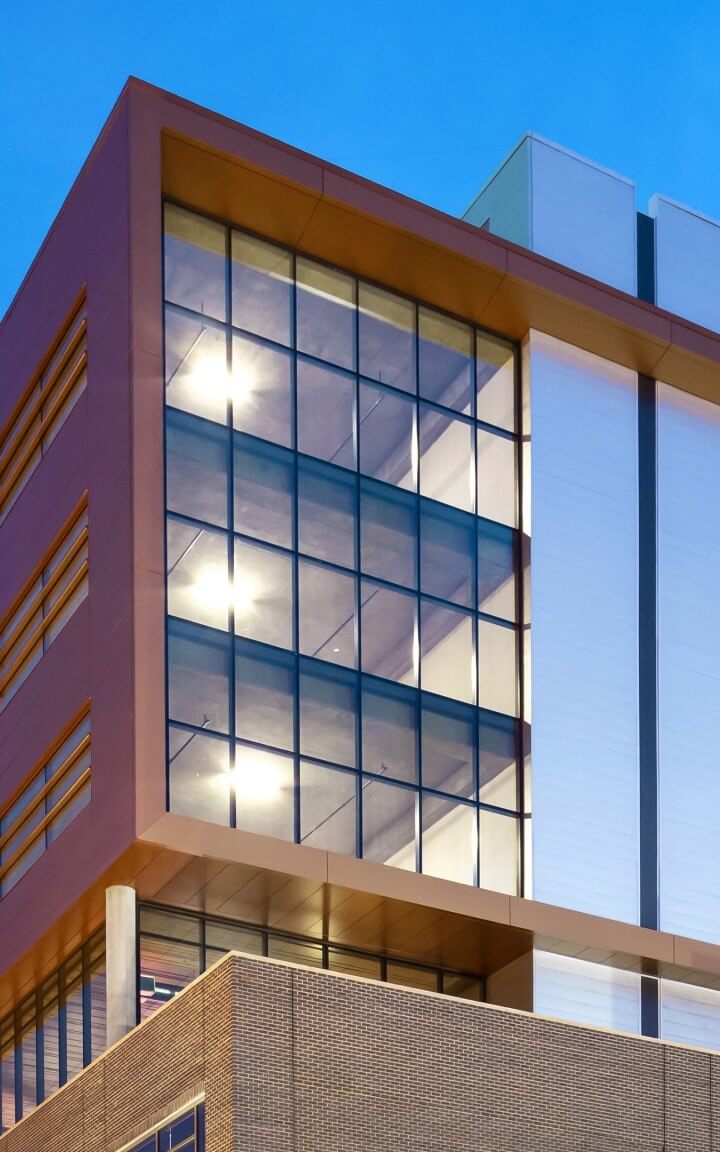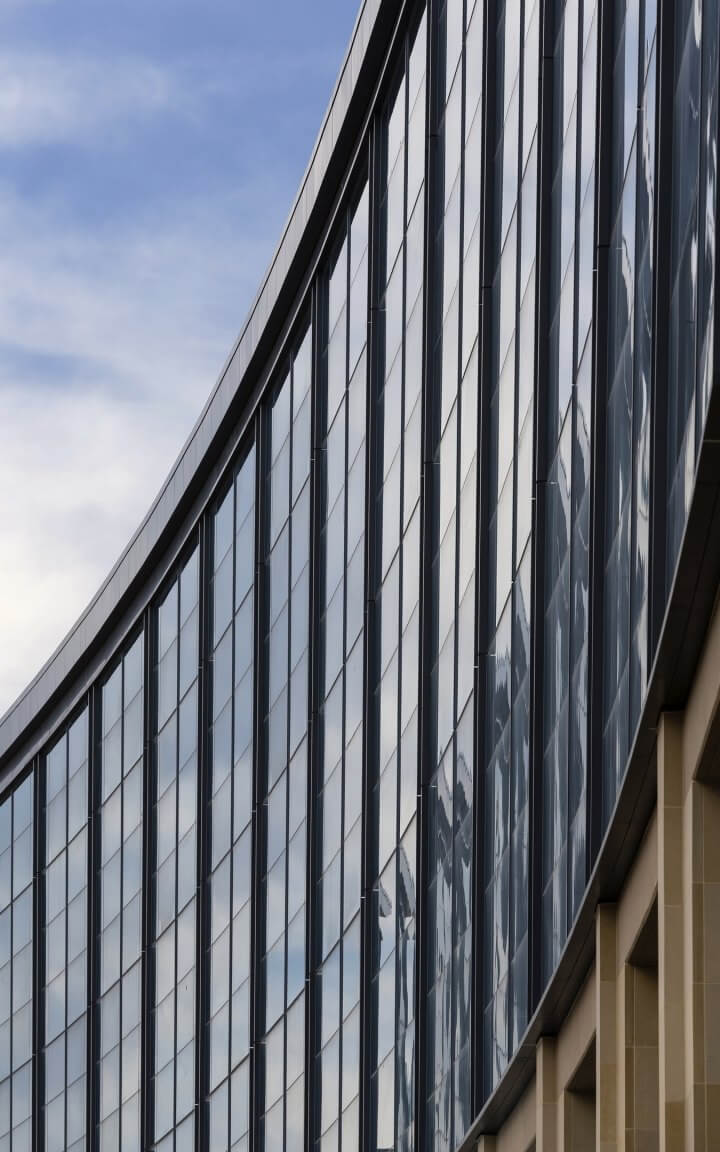Looking Forward to a New Year — A Q&A with Corgan's Singapore Office Director

According to the Chinese zodiac, the Year of the Dragon is the most auspicious in the cycle, making it the perfect time for taking on new challenges and exploring new opportunities. As Corgan’s Singapore office celebrates the Lunar New Year and the fresh start of spring that is accompanied by festivities, Andrew Loke, Singapore Office Director is looking forward to the year ahead.
Andrew’s 30-year, dual-continent, multi-cultural journey in architecture started with his education at the University of Melbourne. After getting his degree, he moved to Shanghai to work on large-scale master planning and architecture projects. This was followed by more than a decade at an international architecture practice in Hong Kong and Singapore, where he was involved from beginning to end on The STAR Vista and the STAR Performing Arts Centre, amongst other large commercial and industrial developments. In 2018, Andrew was tapped to establish, manage, and lead the Singapore studio for a British firm. His next challenge six years later? Andrew has joined Corgan to expand the data center's practice internationally and grow its Singapore studio.
Q&A:
What are you most looking forward to in the new year?
In this new year, I look forward to seeing the Singapore studio grow and achieve new heights; and I am excited to be part of all of this. We’re not only continuing our growth in data centers, but also in the adjacent sectors like commercial, industrial, and aviation, and expansion across southeast and wider Asia, especially in Vietnam, Indonesia, Malaysia, Philippines, India, Taiwan, and Japan.
The dragon is a symbol associated with taking on new challenges and making ambitious plans. What new challenges is the Singapore team taking on?
We are continually pushing our team to stay ahead of technology. There is a new type of data center coming online that relates to the increased use of AI. With developing technology and data center types, we have to think ‘How can we as architects contribute to that discussion of furthering the design of data centers?’
Another challenge is how data centers can be integrated more seamlessly into our urban fabric with other building typologies. Data centers are important pieces of infrastructure and Corgan takes the lead in providing top-tier amenities for employees while still maintaining the security and functionality that is unique to data center architecture. The sustainability aspect is also a real challenge, globally. We are always seeking solutions for decarbonization as well as areas to use clean energy. With data centers, some factors are out of our control, but again, it is for us as architects to be part of the discussion and part of the solution. It is a call to continue to be involved and define the future of data centers, and how they affect us and our environments.
You talked a little bit about sustainability. When did you take an interest in green architecture?
It started early at university. At the University of Melbourne, environmental and sustainable design principles are integrated into its architecture curriculum. When we had design crits, sustainability was always part of the agenda, even if it was as simple as orienting a building to capture sunlight and breezes, improve shading, and reduce thermal heat gain. I quickly understood how following these principles help us create attractive, healthy, and comfortable environments for people. When I graduated and came into practice, environmental and sustainable design naturally became an integrated part of my design approach.
In Singapore especially, there is a push on a national level for sustainability in architecture to mitigate the urban heat island effect and the other effects of climate change, amongst other reasons. This is accelerated by Singapore’s commitments under the UN’s 2030 Sustainable Development Agenda and the Paris Agreement. In other words, there is a huge impetus in Singapore, as well as in the wider Southeast Asia region to progress the sustainability agenda.
So, to form a more holistic approach to design, sustainability must be integrated into our design thinking and process, along with other factors like universal design, resilience, and conservation. Only then, can we be considered part of the broader discussion to find solutions for sustainable real estate developments and the built environment.
What does it mean to you to be an architect?
It means being able to improve people's lives and strengthen — as well as celebrate — the diverse identities of communities by influencing and shaping our built environment. This also entails balancing and navigating the practicalities of building economically sustainable real estate developments.
I’m interested in having a holistic perspective and I strive to adopt a macroscopic-microscopic mindset for the ideation of design solutions. In parallel, I’m conscious that in becoming architects, we are also called to be, to some extent, sociologists, environmentalists, philosophers, technologists, culturists, economists, and conservationists — the profession encompasses a wide range of disciplines.
We need to be good at what we do in our profession, but also understand that there are invisible forces that affect our projects and what we do in our practice, such as real estate economics, geopolitics, technological advancements, social trends, globalization (or deglobalization), and environmental considerations – even the profession itself is a business that is impacted by these same factors.
I must admit that I am an architect at heart. However, as I progress in my career, I have started to become more curious and have taken a keen interest in these invisible forces or business factors, and how they exist and affect us within the built-environment ecosystem. Understanding them well may help advance our design solutions and create more value for our clients.
After all, it is the careful synthesis of the understanding of these business factors, together with our client’s requirements and our design vision, that enables us to design and deliver successful projects that meet the needs and exceed the expectations of our clients, building users, and the wider community.
What is the most important lesson learned from your career so far?
I learned the hard lesson of never letting my idealism in architecture cloud my judgment and decision-making in business.
Architects can be idealists and it can be easy to get lost in the creative, but we also need to consider if the project is feasible from a business standpoint. We have a responsibility to ourselves, and our clients to understand what we commit to – and to be able to deliver on it.
Finally, on the lighter side of things, what animal are you? What is your favorite way to celebrate the new year?
I am a Snake. The Year of the Dragon is the prep year for those of us born in the Year of the Snake.
I am not super traditional, but I will be celebrating the new year by spending time and catching up with family and friends over lots of dinners and drinks.





